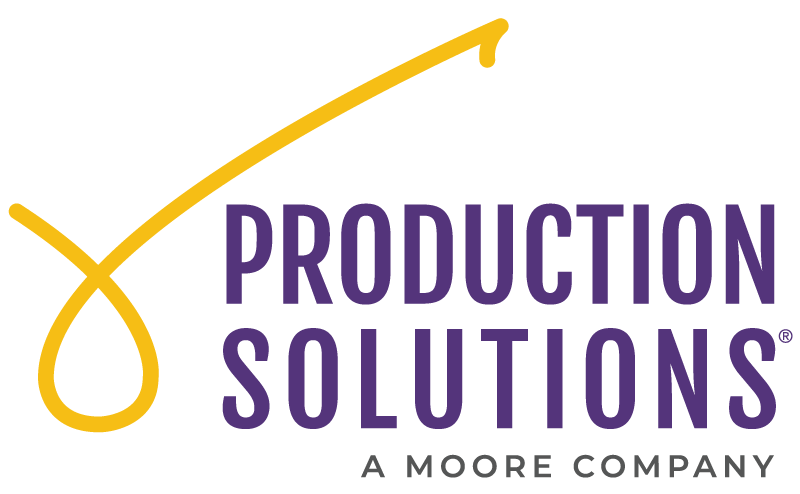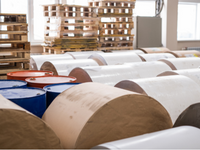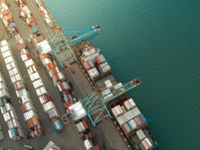The Resource Report: Q1 2022
 Production Solutions
Production Solutions
Wondering where our industry stands in the midst of postal reform, paper shortages, overseas imports, and more? Take a dive into our first Resource Report, where we bring our insight into the latest trends and updates affecting the market.
Postal Topics
What is the latest with Postal Reform?
The Senate passed the Postal Reform Act of 2022 H.R. 3076 in early March, and President Biden is expected to sign it shortly. Once enacted, the new legislation will cancel the Postal Service’s obligation to pre-fund the Retiree Health Benefits Fund; therefore, the USPS has recalculated the amount of retirement-based rate authority that can be included in the upcoming July Rate Changes. They recalculated it from 1.071% to .785%. This means the Postal Reform Act will save mailers 0.286% this year.
Beyond the savings to mailers (because of the repeal of the pre-funding requirement), other key components to the Act are:
- A requirement that postal workers enroll in Medicare at age 65 – which a quarter of them don’t do currently.
- The Postal Service must maintain six-day a week delivery and an integrated network for delivery of Market Dominant and Competitive Products.
- The Postal Service is required to develop and maintain a publicly available dashboard to track service performance, and to report regularly on its operations and financial condition.
What might the July 11th Rate Changes look like?
We recommend mailers plan for the following postage increases:
6.5% increase in rates for:
- First-Class Mail
- USPS Marketing Mail Non-Carrier Route Letters and High-Density/Saturation Mail *Most Non-Profit mail falls into this category, including Commingle Mail (see note below).
8.5% increase in rates for:
- USPS Marketing Mail Flats *Applies to NP Flats
- Periodicals, Package Services, Parcels, Marketing Mail Carrier Route
Tips to keep in mind:
- Rates are calculated based on Mail Category and then Subcategory. The above estimates represent a calculation of how much the USPS can raise rates at the Mail Category level. Due to the total allotment amount broken down in the Subcategories, we will see variability in the actual rate changes.
- We should expect larger increases for Heavy Weight Flats. The rate increases last August and the signals from the Postal Service may mean the heavier a flat is, the more of an increase we will see.
What is likely the easiest way to offset Postage Rate increases?!…
…The USPS Mailing Promotions, of course!
There is still time to take advantage of six of the seven promotions offered this year, so check out our USPS Promotion Calendar to learn more.
Paper and Commodities
The paper industry remains in a state of shortage, long lead times, and rising costs. 2021 saw a dramatic shift in the state of the graphic arts paper market, moving our industry from managing paper orders “just in time”, to now having to plan several months ahead.
How did we get here?
Paper manufacturers have incrementally been removing capacity from the market for many years. But, the demand for printing paper plummeted when COVID hit – in part, paper industry responded by either closing mills or converting to other paper products like packaging. 2020 saw 40% of the print paper manufacturing capacity removed in the US. As the economy reopened in 2021, demand skyrocketed, and supply could no longer keep up. In addition to a paper shortage, costs have been surging on raw materials for paper, including pulp (cost is up over 50% in the last two years), energy, labor, and transportation costs. All these factors have contributed to a perfect storm scenario that has resulted in the longest lead time and largest year-over-year pricing increases that we have ever seen. In 2021, paper pricing increased 16-25% depending on the type.
What should we expect in Q2 of 2022?
The upward pricing trend has continued into 2022 as there have already been across-the-board 6-9% price increases announced in Q1. It is probable that there could be another increase in Q2 as demand still outweighs supply. Not to mention cost inflation for inputs such as energy, transportation, pulp, and labor, continue to rise.
Unfortunately, market conditions will likely get even worse in Q2, largely due to the union strike at UPM paper mills in Finland. This strike, now expected to continue until mid-April, will reduce US imports of both coated and uncoated papers causing even tighter market conditions. Since this mill is also a large producer of label liners, it is expected that this strike will have a far-reaching impact on many industries, including food and consumer goods.
The challenges the paper industry face are very real, and there are no indications that they will ease up any time soon. For the foreseeable future, expect more of the same.
- Lead time challenges will continue into 2022 and possibly into 2023. We need to continue planning WAY ahead, 6-12 months is ideal depending on the size and details of the project.
- Budgeting – expect more price increases. While we cannot predict what the price increases will be, we know there will be more.
Overseas Imports and Logistics
Out at Sea
In the fall of 2021, it was reported that the west coast ports were significantly backed up. Freighters were moored out at sea for weeks and months, and the ports cleared freight from their docks slowly. There were even images of containers being stashed on city streets in California as the port holding areas overflowed. Happily, it seems that these bottlenecks are slowly clearing up as the holiday rush recedes, and more ports begin opening again.
Where we were seeing 12-16 weeks from port to port in the second half of 2021, that lag has dropped back to a much more normal 4 weeks. That said, there is a possibility that the end of 2022 could be similar to the end of 2021. Start thinking about those end-of-year premiums now!
On Land
- The load-to-truck ratio increased from 6.5 in December to 9.3 in January 2022. Meaning, there were 9.3 available loads for every available truck across the country. This is the first time in almost five years that the load-to-truck ratio INCREASED from December to January.
- Spot rates on trucking accounted for around 25% of the market, compared to 10% in pre-pandemic times. (Source: https://www.dat.com/industry-trends/trendlines).
- Spot rates are paid on freight that needs to be moved immediately; in other words, trucks are often moving with less than full truckloads, as retailers and others are valuing speed of delivery over quantity.
All of this is expected to continue into Q2 and beyond. The components we need to create direct mail campaigns are delivering both later AND in shorter supply than they were originally ordered. We have been seeing this occur both in printed goods, and the paper supplied to print those goods.
Unfortunately, costs are also increasing as demand for drivers far outpaces the loads available, and the cost of fuel rises significantly. The cost of diesel fuel on average across the country is now steadily over $4/gallon, whereas from 2015 up to early 2020 it had been hovering around $3/gallon or under. (Source: https://www.eia.gov/petroleum/gasdiesel/ ). This dramatically increases our fuel surcharge costs from our logistics providers which are adding up to 46% in FSC costs to their deliveries as of mid-March 2022.
Mail Delivery
How is Mail Delivery Looking?
Mail Delivery looks pretty good so far this year. The average First Class mail is around 4.6 days and for Non-Profit Marketing Mail, it’s 13.1 days. We expect mail delivery trends to continue like this into Q2.
If you have any questions, don’t hesitate to reach out to your PS contact!








